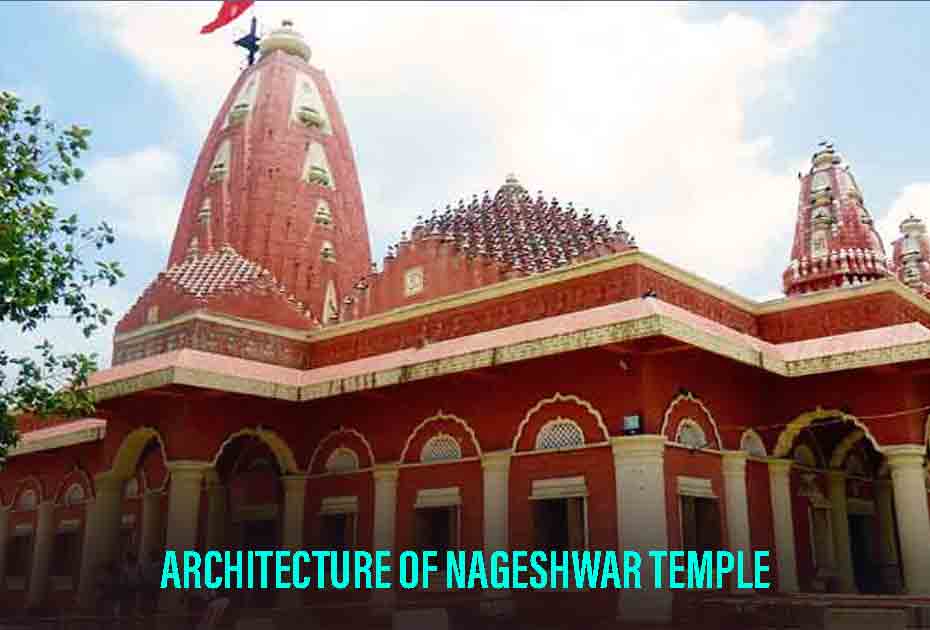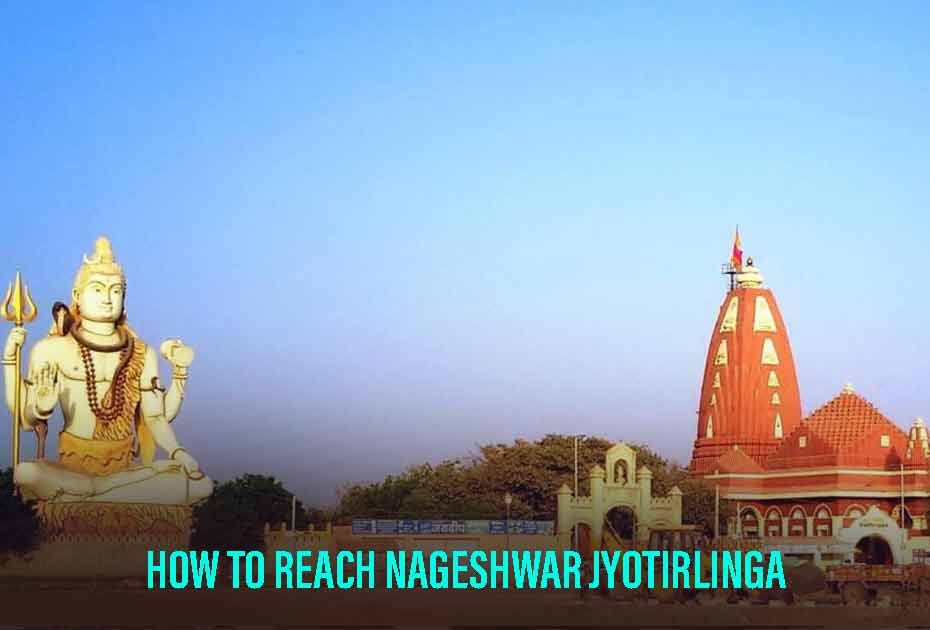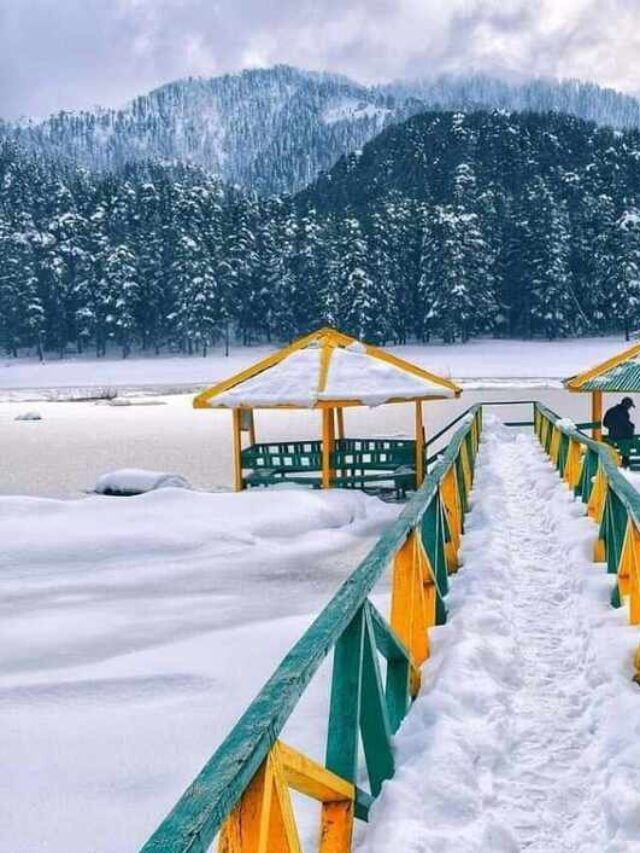Nageshwar Temple is a historic Hindu temple situated in Gujarat’s Nageshwar hamlet, 15 kilometres from Dwarka. It is also referred to as Nagnath Temple, and it is one of the well-known spots to explore as part of Dwarka tour packages. It is a well-known pilgrimage site close to Ahmedabad. Take a glance at who is Nageshwar, Nageshwar jyotirlinga history as well the story of the Nageshwar Mahadev temple. This guide will help to know how to reach Nageshwar jyotirlinga temple and Nageshwar Jyotirling temple timings.
Nageshwar Jyotirlinga Temple
Who Is Nageshwar?
One of the twelve Jyotirlinga of Lord Shiv, Nageshwar Temple is dedicated to him. It is also one of the earliest temples described in the Shiv Purana. Nageshwar’s Jyotirlinga is particularly significant because it is thought to be the first of the 12 Jyotirlingas.
Nageshwar Jyotirling Temple Timings
The Nageshwar jyotirlinga temple is open from 6 AM till 9 PM. Various rites are also carried out in the temple at this time. These rituals, like the morning & evening aartis, are open to devotee participation.
The Nageshwar Jyotirling temple timings accessible for darshan are from 6.000 AM to 12.30 PM in the morning. Devotees usually shower the Shivling with milk in the morning.
The temple is accessible for darshan starting at 5:00 PM till 9.30 PM. Devotees are most entranced by Sandhya Aarti in the evenings. The Shringar Darshan is held at 4 PM and the Shayan Aarti is conducted at 7 PM.
Story Of Nageshwar Mahadev Temple
Previously, the forest was home to the vicious demon Daruk and his wife Daruka. Daruk had grown exceedingly conceited and obstinate as a result of a blessing that Parvati had bestowed. He began disrupting and destroying Hindu celebrations with his Daruka.
He even kidnapped Supriya, a devoted follower of Shiva, along with numerous others, and locked them up in a secret dungeon. Supriya continued performing all the rituals associated with Shiva Puja on a regular basis, as well as donning Rudraksha, reciting the Om Namah Shivaay Mantra, and wearing the holy ash or Bhasma.

Upon witnessing this unwavering faith and devotion, Lord Shiva was touched and manifested there. A holy Jyotirlinga was erected there at that point. After defeating the demons, Lord Shiva made the location famous as Darukavanam or Nageshwar Mahadev temple, and the Linga became known as Naganath or Nageshwar.
Nageshwar Jyotirlinga History And Architecture Of Nageshwar
Here in Kalika Peetha, Adi Shankaracharya is thought to have built the foundations for his Western Math. The Nageshwar Temple architecture is of a western design. The Nageshwar Jyotirlinga’s plan was created using Vastu Shastra principles and is based on the human body’s Syanama (sleep) position. It is split up into five main sections. The Mahadwara (feet) in this case serves as the temple’s main entrance, through which worshipers enter. Following that, two sacred idols of Lord Ganesh and Lord Hanuman are represented by two hands at the entryway.

The main prayer hall, or Sabha Mandap (Stomach and Chest), is decorated with prayer rugs that represent the human stomach and chest. The primary Shiva linga is housed in the sanctum (head) of Antarala, the seat of worship for Nandi, the vehicle of Lord Shiva. The sanctum sanctorum is analogous to the head of a human body. Gomugam faces east, while Nageshwar Temple faces south.
The temple is gently sloping towards Nageshwar Lake and was built in accordance with the general weather patterns of the region. On either side of Nageshwar Lake, there is a retaining wall. Due to the enormous size and lack of subterranean rock layers, the temple’s foundation is constructed in the raft style. The entire temple is constructed of RCC, or reinforced concrete cement, which has been chemically coated to prevent rust. The building is covered with light-coloured Porbandar stone with a porous texture. To finish the temple, a sizable number of labourers from Bombay were requested.
Facts About Nageshwar Temple
- Why the linga faces south has a fascinating backstory. According to legend, while singing the name of the Lord, other devotees begged a devotee by the name of Namdev to move aside and not cover the Lord. Naamdev requested advice from the others regarding a location where the Lord is not present. He was left in the south after being taken there by enraged followers. The linga was likewise oriented south, which astounded them.
- It is said that individuals who meditate and worship Nageshwar Jyotirlinga here would be liberated from all poisons, including spiritual and bodily ones (such as lust and anger).
- Tri-mukhi rudraksha is the name given to the Nageshwar linga. These three-faced rudrakshas are regarded as being extremely potent.
- The main draws of this comparatively calm location include a 25 m tall statue of a sitting Lord Shiva and a sizable garden with a pond. According to some archaeological digs, the location has five older cities.
- As the ling at Nageshwar contains the Dwarka stone, it is considered to be very auspicious and unique.
- Rudrakshas are thought to be the tears of Lord Shiv. The ling at Nageshwar is an oval Rudraksha with 3 faces.
- The divine jyotirlinga was once housed in a smaller temple. Aurangzeb, the Mughal emperor, allegedly sought to destroy it but was unsuccessful. Every time his army attempted to attack it, a swarm of bees repelled them. The Nageshwar Jyotirlinga stood the test of time after he finally gave up.
- The renowned music producer Gulshan Kumar funded the construction of the current building. In fact, you will notice a sizable painting of him now if you explore the temple, close to the entrance. It is said that he was appalled by the condition of the old temple when he toured this jyotirlinga as part of his journey.
- Near the enormous statue of Lord Shiva, near to the genuine linga, which is located below the earth. The original linga served as the foundation for the building. The Sanctum Santorum, also known as the Garva Griha, is therefore located a few feet below the earth when you enter the structure.
- Concerning the jyotirlinga’s precise location, there is substantial confusion. Nagnath at Audhgram adjacent to Purna in Andhra Pradesh and Jageshwar temple at Almora in Uttar Pradesh are the other two temples with Nageshwar shrines.
- Lord Krishna is said to have worshipped Lord Shiv here in the past. Here is where he is supposed to have done the Rudrabhishekam.
- The Shiva Purana also makes reference to the shrine. The location of Nageshwar Jyotirlinga is in an Indian forest known by the old name “Darukavana.”
Also Read – Somnath Temple Of Gujarat – Story, History, Facts And How To Reach?
How To Reach Nageshwar Jyotirlinga Temple
On the coastal region of Saurashtra in Gujarat, halfway between Gomati Dwarka and Bait Dwarka Island, is where you’ll find the Nageshwar Jyotirlinga Temple. You must first go to Dwarka by plane or rail to get to the temple. Below are the modes you can prefer if you are looking for how to reach Nageshwar jyotirlinga.

By Flight
Jamnagar International Airport, which is around 140 kilometres from Dwarka, is the closest airport. Regular flights connect Mumbai to the Jamnagar Airport. A taxi can be rented for around INR 1800-2000 to travel the journey from the airport to Dwarka.
By Train
Daily, regular trains run from Dwarka Railway Station to various national locations. About 18 kilometres (25-30 minutes by car) separate Nageshwar from Dwarka. From Dwarka, auto-rickshaws are fairly accessible and cost about INR 400–500 for one journey. Taxis are also easily accessible and cost about INR 900-1100 roundtrip.
Conclusion
While you are welcome to visit the spiritual and holy site of Nageshwar jyotirlinga temple at any time of the year, it is recommended that you do so between September to March when the weather is cooler. Any devotee would consider visiting this historic and holy location during Mahashivratri to be the ultimate delight!
Also Read – All About Shivling Story, The Origin Of Lingam And Signs That Lord Shiva Is With You
Frequently Asked Questions
1. How many Nageshwar Jyotirlingas are there?
One of the 12 Jyotirlinga Shrines described in the Shiva Purana is the temple of Nageshwar, which is devoted to Lord Shiva. Some claim that the Jyotirlinga is the Nageshwar or Nagnath temple in the Saurashtra district of Gujarat. In contrast, others assert that it is the Nagnath temple in the Marathwada region of Maharashtra.
2. Why is Nageshwar Temple famous?
One of the most well-known Shiv temples in the nation is Nageshwar Temple, also known as Nagnath Temple, which is situated in the Dwaraka suburbs. This temple stands for the capture of bad forces from the planet. Another of the 12 Jyotirlingas, this temple contains an intriguing genesis story.
3. Who made Nageshwar Jyotirlinga?
Lord Shiva is recognized as the Supreme God and the universe’s creator in Hinduism. According to legend, Lord Brahma and Vishnu engaged in battle long ago to determine who would rule supreme. Shiv appeared in front of them as a large pillar of light. Brahma climbed above and Vishnu went downward to find the ends of this luminous pillar. Vishnu conceded defeat after failing to find the solution, whereas Brahma opted to tell lies. Shiva descended from the pillar, cursed Brahma, saying that he would never be worshipped again until the end of time, and praised Vishnu for his sincerity. The name “Jyotirling” is given to this luminary pillar.
In his Dwadasha Jyotirlinga Stotram, the Indian saint Adi Shankaracharya, who revitalized Hinduism in the year 800 CE, listed the 12 most significant Jyotirlingas, of which Nageshwar is one.
4. Why is Shiv called Nageshwar?
Shiva is also referred to as the “Lord of the Snakes” or “Nageshwar.” It is stated that the snake’s three loops around Lord Shiva’s neck represent the past, present, and future. According to this, Lord Shiva has control over and is independent of time. Additionally, it alludes to the latent force known as Kundalini Shakti that exists inside him.
For more related information, visit Discover – Trending Reader.











